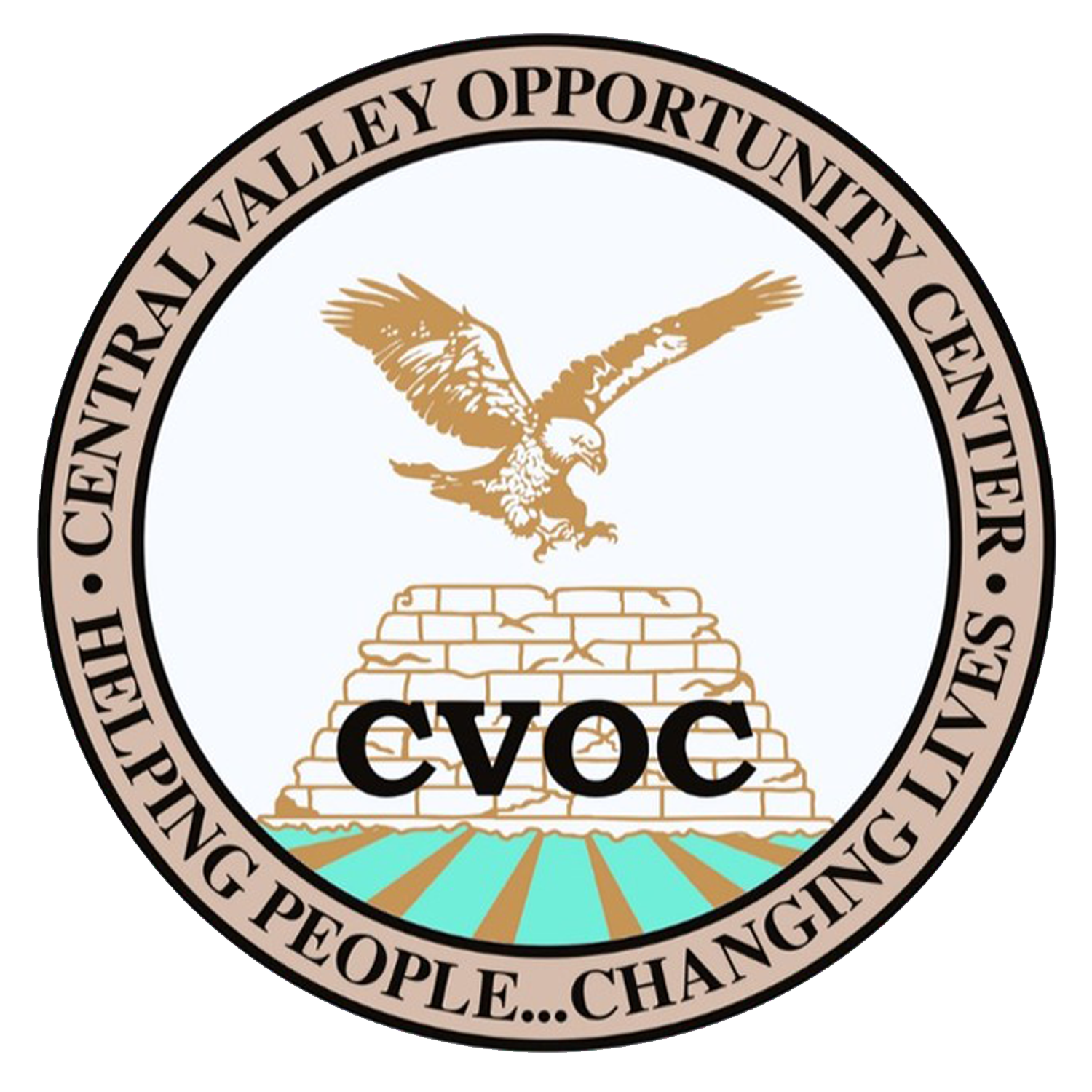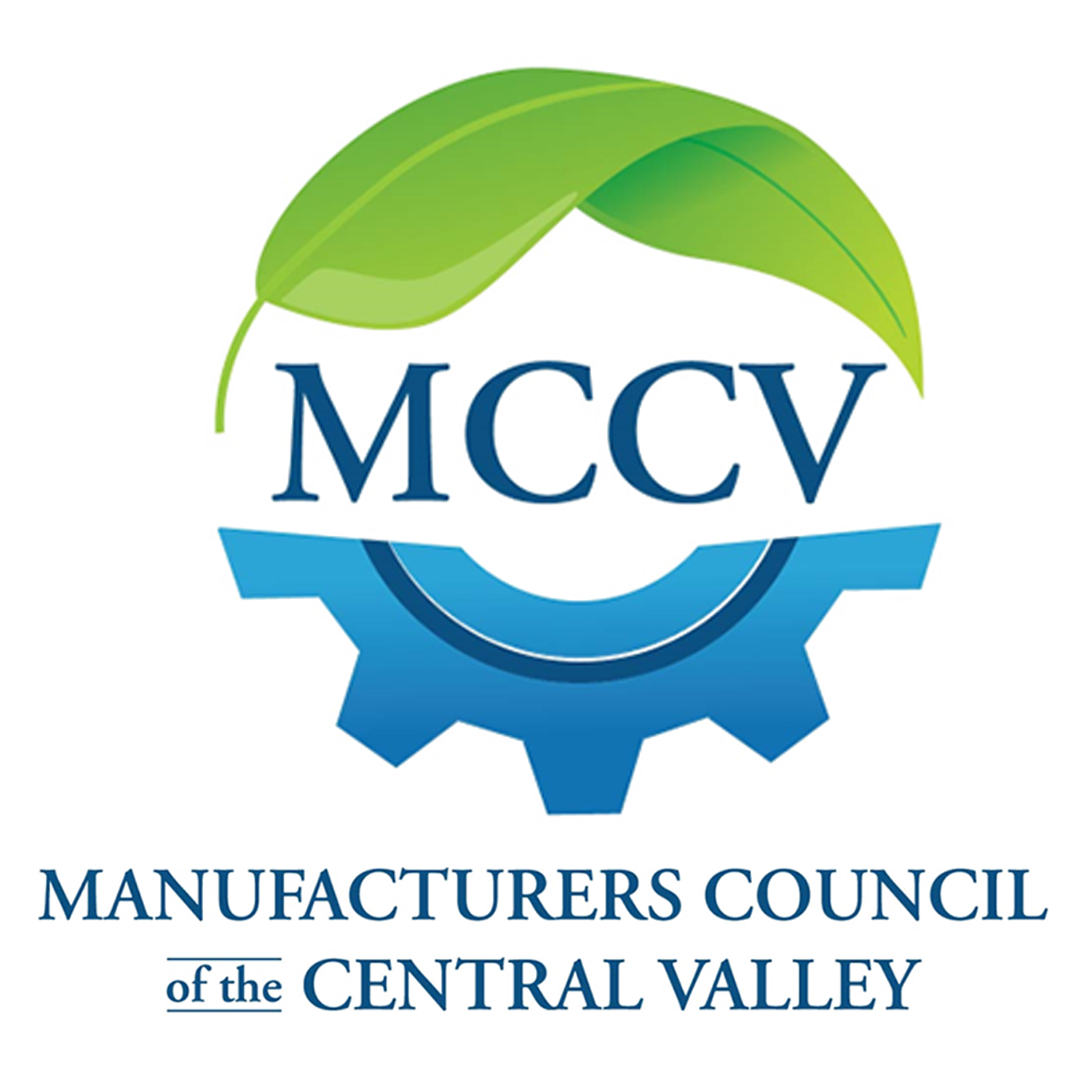
Overview
The Stanislaus County Workforce Development agency and Stanislaus 2030 team seek proposals for grants of $50,000 to $195,000 to enhance the manufacturing workforce development ecosystem in Stanislaus County. A total of $1,110,000 million in grant funding is available for distribution to projects that provide accessible pathways to employment in the manufacturing industry, develop or enhance deep industry partnerships that will drive economic growth and opportunities for community members to attain economic mobility, develop feedback loops between ecosystem partners to enhance program outcomes and coordinate regional efforts, and provide local job seekers with tangible information about opportunities to enter into and progress in the manufacturing industry. This opportunity prioritizes partnerships and collaboration across training providers, employers, and intermediary organizations.

Background
Stanislaus 2030 leads collective action towards implementing the economic and workforce initiatives identified in the County’s Investment Blueprint through coordination and aligning our efforts across governmental agencies, private-public partnerships, educational institutions, businesses, service providers, and community groups for the greatest impact for all in our community. As part of the Investment Blueprint, Stanislaus 2030 seeks to strengthen the manufacturing workforce ecosystem by aligning education and training programs with the current and future needs of manufacturing.
To support grantee success, Stanislaus 2030 is partnering with Bienestar Community Economics to provide technical assistance throughout the grant period.

Eligibility
Educational institutions, 501(c)(3) and 501(c)(6)nonprofit organizations, and school districts located in Stanislaus County with experience in implementing manufacturing workforce strategies are eligible to apply. All projects must be carried out within Stanislaus County.
Priority Occupations
For the purposes of this grant, the manufacturing sector is defined using the Bureau of Labor Statistics code NAICS 31-33. This RFP specifically focuses on manufacturing occupations within the sector, where day-to-day tasks involve the transformation of raw materials into finished goods through a series of automated and hands-on processes. Sample occupational groups are engineering occupations, production occupations, and logistics occupations. Other occupations that support the manufacturing sector such as accountants and auditors, sales representatives, and computer user support specialists are not the focus of this RFP. Occupations that are not traditionally included in the manufacturing sector but have significant overlap in skill sets or daily tasks and can be demonstrated to have advancement or transfer opportunities into the manufacturing sector will be considered, such as HVAC and electricians.
Applications are required to demonstrate that they will target in-demand, high-quality manufacturing jobs in the region. Examples of these jobs include: machine operator, assembly and manufacturing supervisors, quality assistance and quality control technicians and inspectors. For projects that target jobs outside of the examples provided, applicants should provide labor market data demonstrating the demand for the roles and/or letters from employers documenting internal demand and specific commitments related to hosting work-based-learning and/or hiring program graduates.
Grant Focus
These grants aim to strengthen local talent pipelines into the manufacturing industry by investing in strategic partnerships, programs, and activities. Successful investments will achieve two key impacts:
- Develop, improve, and expand work-based learning, pre-apprenticeships, and apprenticeships that prepare individuals in the County for manufacturing careers.
- Forge connections among a system of partners (including education, training, and support service providers) to facilitate the exchange of information, talent, and economic opportunities, thereby bolstering the local manufacturing industry.
Applicants must propose project outcomes that directly align with the goals and priorities outlined in this grant opportunity.

Goals
- Increase On-the-Job Training and Work-Based Learning: Develop or expand work-based learning opportunities (including On-the-Job Training (OJT), paid internships, apprenticeships, and pre-apprenticeships) linked to new or existing courses and programs that prepare individuals for living-wage jobs in the region.
- Align Career Pathways and Stackable Credentials with Industry Demand: Improve courses and pathways leading to certificate or credential attainment and job placement in manufacturing or related industries. This can involve:
- Creating stackable credentials utilizing existing education and training programs.
- Developing dual enrollment pathways that result in certificate/credential attainment or progress toward degree completion.
- Establishing credit for prior learning processes that gives credit for skills and competencies learners may already hold, and accurately places them into the appropriate training/education course or program.
- Forming employer partnerships that lead to work-based learning or direct job placement opportunities.
- Establish a Regional, Industry-Recognized Skills, Competency, and Credential Model for Manufacturing: Develop a local industry initiative to convene manufacturing stakeholders to learn, provide input, and adopt a regional competency model. This model must:
- Identify existing and projected industry needs.
- Establish a process for local industry to recognize certificates, credentials, or other training that meets their talent development needs.
- Collect information on emerging policy or advocacy needs.
- Increase Community Access to and Awareness of the Manufacturing Industry: Develop and provide career navigation services to help community members understand pathways into and advancement opportunities within the manufacturing industry. This includes:
- Offering feedback and advising to regional training programs.
- Updating and distributing job seeker-focused materials and resources for career awareness and navigation.
Priorities
- Strong Employer Partnerships for Talent Development: This includes commitments related to recruitment, onboarding, identifying critical skills and roles for industry success, and commitments to interview, hire, or provide paid training through "earn and learn" strategies.
- Adoption of Manufacturing Industry Skills, Competencies, and Recognized Credentials by local employers.
- Connecting Local Talent with Regional Job Opportunities in manufacturing and related industries.
- Strategic Partnerships Among Education and Training Providers and Community-Based Organizations: These partnerships should aim to improve outcomes in certificate and credential attainment and accelerate access to quality jobs. Examples include:
- Establishing a Credit for Prior Learning (CPL) process that grants credit for existing skills and competencies, accurately placing individuals into appropriate training or education programs.
- Developing recruitment and retention partnerships with organizations that effectively reach the target population.
Evaluation Criteria
- Alignment to goals and priorities: Applicants must clearly explain how their project will meet the stated goals and priorities, and contribute to the intended impact of this grant opportunity.
- Strength of partnerships: Applicants must provide evidence of the commitment level of their partnerships. This includes, but is not limited to: letters of support detailing partner commitments, clearly defined roles and responsibilities for each partner, and any leveraged resource sharing.
- Population-Specific Approaches: Provide a clear description of the project plan and the applicant’s capacity to meet the needs of their intended target population. This must include explicitly stating the population to be served and detailing the specific strategies and approaches to address their needs effectively, both directly or through partnership with other organizations.
- Capacity to Implement Proposed Activities: Provide a clear description of the organization’s relevant work experience, demonstrated outcomes, and overall ability to successfully implement the proposed project plan.
- Project Outcomes: Clearly state the expected outcomes of the project, describe how the proposed activities will directly lead to these outcomes and align with the goals of this grant opportunity, and the organization’s experience or capacity to track these outcomes.
- Sustainability Plan: Clearly explain how the proposed project activities will be sustained, expanded, or contribute to the long-term strengthening of the manufacturing industry beyond the grant period.
Allowable Use of Funds
Applicants are allowed to submit more than one project proposal.
Funding
A total of $1,110,000 is available and will be distributed across multiple awarded projects. Applicants may request between $50,000 and $195,000, with budgets expected to reflect the scope and scale of the proposed project.

Key Dates
- An informational session was held on Thursday, August 7, 2025, at 1 PM. Watch the recording below.
- A second informational session will be held on Thursday, August 28, 2025 at 3 PM.
- The deadline to submit questions about the grant and the proposal submission process is Friday, September 12, 2025.
- Grant proposals are due by Friday, September 19, 2025, at 5 PM.
- A planning session will be held on Sept 12, 2025, at 8:30 AM at 1325 H St, Modesto, CA 95354. Get tickets by clicking here
- Awards will be announced the week of October 6, 2025.
- Projects will commence upon contract execution, with an anticipated start date of Monday, October 27, 2025.
- All funds are anticipated to be deployed by October 2026.
Watch The Informational Session for Stanislaus 2030
Get more information on the ins and outs of the Stanislaus 2030 grant program with our recording of the Informational Session for Stanislaus 2030 that took place on Thursday, August 7, 2025.
To see the slides individually, Click Here.
Watch The 2nd Informational Session for Stanislaus 2030
Get more information on the ins and outs of the Stanislaus 2030 grant program with our recording of the Informational Session for Stanislaus 2030 that took place on Thursday, August 28, 2025.
To see the slides individually, Click Here.
Manufacturing Grants Informational Session Q&A
- Question: Give some examples of successful efforts, not just successful applications but successful executions.
- Answer: Leveraging your experiences that exist around manufacturing talent development and the conversations of what has been talked about but also leveraging your own talent. The needs and competencies on the skills. What are the type of occupations that I am really looking to grow and partner with someone to help build out that competency model.
- Answer: Leveraging your experiences that exist around manufacturing talent development and the conversations of what has been talked about but also leveraging your own talent. The needs and competencies on the skills. What are the type of occupations that I am really looking to grow and partner with someone to help build out that competency model.
- Question: Is funding available for planning?
- Answer: Yes, this is a planning and action grant. We also recognize that some of this work, for example, working with local employers to outline what the competencies you’re looking for, what those skills are sets or those occupations. Planning should be connected to action and should be clearly aligned to the grant goals and priorities.
- Answer: Yes, this is a planning and action grant. We also recognize that some of this work, for example, working with local employers to outline what the competencies you’re looking for, what those skills are sets or those occupations. Planning should be connected to action and should be clearly aligned to the grant goals and priorities.
- Question: Are there any restrictions on usage of funds? For example, would it be allowable to pay students to participate in internships?
- Answer: Yes, we are able to pay for work experience.
- Answer: Yes, we are able to pay for work experience.
- Question: If applied for the grant and it becomes too expensive to see through or some other glitch, what happens, is it worth the investment?
- Answer: Align with what is possible within the grant period, what are the outputs that you expect to see by the end of the grant period, and put some thought on sustainability. What are things that you can get to and how is that going to be catalytic and have a larger impact?
- Answer: Align with what is possible within the grant period, what are the outputs that you expect to see by the end of the grant period, and put some thought on sustainability. What are things that you can get to and how is that going to be catalytic and have a larger impact?
- Question: Are there opportunities for apprenticeships that might be a little bit outside of the manufacturing sphere?
- Answer: On the Stanislaus County Workforce Development website there is labor market information on how we define manufacturing. To your point if it feeds into the manufacturing industry and is part of the health and growth articulate the connection in your application.
- Answer: On the Stanislaus County Workforce Development website there is labor market information on how we define manufacturing. To your point if it feeds into the manufacturing industry and is part of the health and growth articulate the connection in your application.
- Question: Is there any reporting after the grant has been received or any type of match the district would have to provide?
- Answer: We will be providing a template for quarterly updates as well as an annual update. With respect to matching, it is not required.
- Answer: We will be providing a template for quarterly updates as well as an annual update. With respect to matching, it is not required.
- Question: If we put something in the budget, do we have to use the funding for that specific allocation?
- Answer: If you need to adjust your budget as the program progresses, we will have to request a budget modification. If you obtain the award, we will assist with questions regarding scope of work and compensation allocation.
- Answer: If you need to adjust your budget as the program progresses, we will have to request a budget modification. If you obtain the award, we will assist with questions regarding scope of work and compensation allocation.
- Question: We are an educational institution. We are not located in Stanislaus County; however, we are doing work in Stanislaus County. Would we be eligible?
- Answer: The funds are restricted to Stanislaus County. The proposal must ensure that individuals in Stanislaus County would be the direct beneficiaries.
- Answer: The funds are restricted to Stanislaus County. The proposal must ensure that individuals in Stanislaus County would be the direct beneficiaries.
- Question: Would it be appropriate to include Workforce Development as a partner in the grant application if we’re hoping to use Workforce Development as an employer of record? If so, do we need to request a letter of support?
- Answer: No letter of support is required. You only need to state that you are interested in having Workforce Development provide the service.
- Answer: No letter of support is required. You only need to state that you are interested in having Workforce Development provide the service.
- Question: Do we need to include funds in our budget requests to support SCWD’s services as Employer of Record, or will these services be provided as Technical Assistance through the grant program?
- Answer: Yes, you will need to include funds in your grant request budget for Workforce Development’s Employer of Record Services. When preparing the budget, please account for an additional 21.5% above the hourly wage. This adjustment covers employer related costs, including taxes, Worker’s Compensation, FICA, Medicare, and check processing.
- Answer: Yes, you will need to include funds in your grant request budget for Workforce Development’s Employer of Record Services. When preparing the budget, please account for an additional 21.5% above the hourly wage. This adjustment covers employer related costs, including taxes, Worker’s Compensation, FICA, Medicare, and check processing.
Proposal Instructions
Please submit your proposal by clicking the project application button below. Proposals need to be submitted by September 19, 2025 at 5pm. If you have any questions please email scwdgrants@stanworkforce.com
Proposals will be evaluated based on alignment to program goals, strength of partnerships, population-specific strategies, capacity to implement, project outcomes, and sustainability.

The Manufacturing Grants Have Been Awarded
The Stanislaus County Workforce Development agency and Stanislaus 2030 team have thoroughly reviewed proposals for grants of $50,000 to $195,000 to enhance the manufacturing workforce development ecosystem in Stanislaus County. We've awarded the grants to the following organizations:

Ceres Unified School District is partnering with HSSR Enterprises, Inc. to plan and implement a Student Run Manufacturing Enterprise (SRME) at Ceres High School. This initiative will assist Ceres Unified School District offer students authentic work experience in manufacturing.

Central Valley Opportunity Center will provide a work-based learning program that is designed to prepare participants for careers in the manufacturing sector through a combination of vocational training and paid work experience.

Manufacturers Council of the Central Valley will leverage existing partnerships, resources, and assets to execute a high-impact convening serving Stanislaus County stakeholders.

Modesto Junior College’s Workforce Development Department will develop and launch an Industry and Trades Professional Advancement Toward Career Horizons (PATCH) program, modeled after the Healthcare PATCH initiative.

Climate Action Pathways for Schools (CAPS), in partnership with Modesto City Schools (MCS), will expand its Sustainability Specialist Registered Apprenticeship and internship program and launch a pre- apprenticeship program for Title I high school students in Stanislaus County. Students will receive paid, hands-on training in facility operations, HVAC, engineering, and sustainability careers that support the regional manufacturing sector.

VOLT will expand its Fast Track program to reskill machine operators into automations toles supporting in as few as 13 weeks. The accelerated program equips participants with electro-mechanical troubleshooting, PLCs, VFDs, robotics, and sensor technologies, leading up to five SACA Silver and Gold certifications
